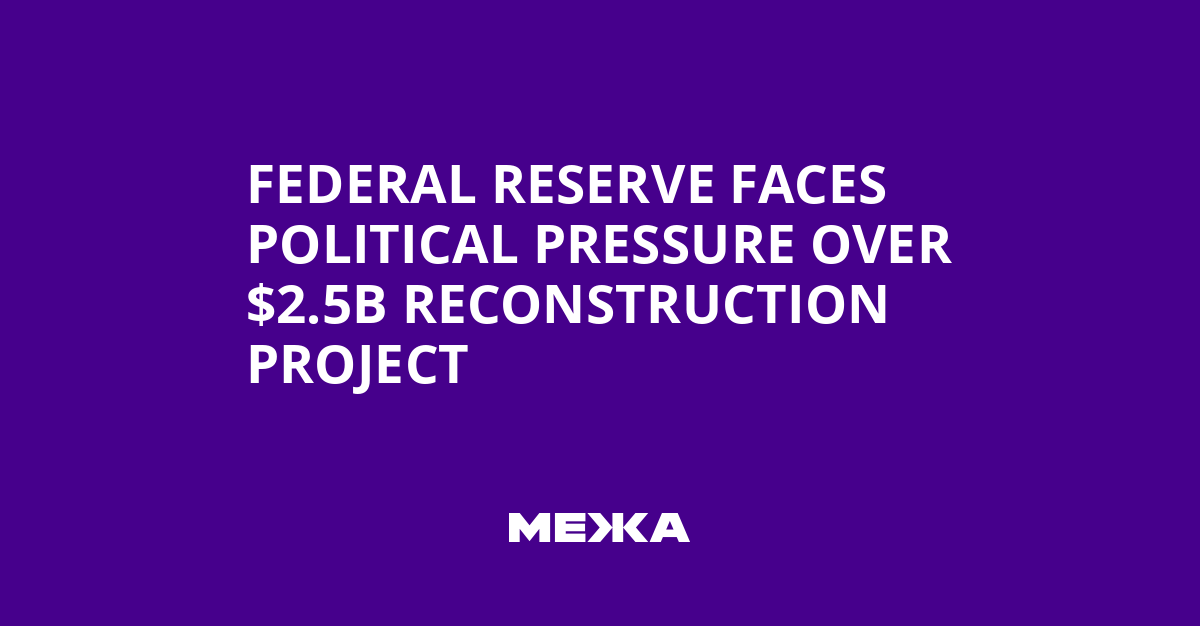The Federal Reserve System, one of the most secretive institutions in Washington, has found itself in an unusual situation, engaging in a public battle for its reputation with the White House. The central bank, under close scrutiny from President Donald Trump and his allies, is trying to mitigate any potentially inaccurate statements and attacks related to Trump’s upcoming tour of the Fed’s reconstruction site located near the National Mall.
The White House is using the $2.5 billion reconstruction project as a possible legal pretext to remove Fed Chair Jerome Powell, whom Trump has criticized for months for the central bank’s failure to lower interest rates. The timing of the tour, coinciding with growing attention to the president’s past ties to the disgraced financier Jeffrey Epstein, may be a PR move aimed at diverting attention from the political scandal. Trump plans to visit the Fed with top advisors, continuing to publicly criticize Powell on social media.
The Fed, in turn, made a strategic move by organizing a tour for several media outlets the day before. This indicates that the bank is actively engaged in a communications strategy battle with the White House.
“The Fed has laid the groundwork behind the scenes with the media, and this is exactly the long-term approach it uses,” said Anne Marie Malecha, CEO of Dezenhall Resources, a reputation and crisis management firm. “You won’t see the Fed going on Truth Social or engaging with influencers, so this is probably the most radical step an institution like the Fed will take.”
The Fed declined to comment. Journalists who attended the morning tour described an active construction site with scaffolding, cement mixers, and construction equipment. The Marriner S. Eccles building, one of two being renovated, received new security upgrades.
These upgrades include blast-resistant windows and brace walls, which significantly impact construction costs, according to Fed staff during the tour. They meet the highest security standards of the Department of Homeland Security for federal buildings.
Reporters also noted that rooftop seating at the Eccles building was canceled to avoid the appearance of extra amenities, although it would not have been expensive, according to Fed staff. During the tour, it was also reported that tariffs and rising material costs were the main reasons for budget overruns compared to 2018-2019 estimates. The project is expected to be completed by fall 2027, with about 3,000 Washington-based employees planned to occupy the building by March 2028.
Despite the Fed’s attempts to be transparent about the project, administration officials continue to harshly criticize the bank. Treasury Secretary Scott Bessent characterized Trump’s public complaints about Powell as “referee work” – a term meaning a loud protest by a player to get the referee to reconsider a call.
“I think the building is just a distraction,” said David Wessel, director of the Hutchins Center on Fiscal and Monetary Policy at the Brookings Institution, in an interview with CNN. “It’s a way to divert attention from other problems the president is facing.”
“They’ve been working on a nine-year construction project for seven years,” Wessel added. “It wasn’t a secret. (Now it’s relevant) because the president wants to make Jay Powell’s life miserable.”
Trump’s criticism of Powell is not new: he has previously criticized the Fed chair, his own nominee for the position. But in recent weeks, this criticism has intensified, and Republicans are using this expensive but routine reconstruction project as a pretext for attacks.
The Fed reconstruction may become a convenient trump card for Trump as the administration fights its own battle for control over information. The Justice Department’s work on the so-called “Epstein cases” has sparked outrage even among some Trump supporters. This week, CNN released archival videos and photos shedding more light on Trump’s past connections with Epstein.
“This administration is very skillful at making lawmakers, the media, and the public focus on issues that benefit them. It’s a ‘look there, not here’ strategy,” Malecha said.
“A sharp shift in attention is often an effective strategy,” she added.
Report prepared by Brian Todd for CNN.
